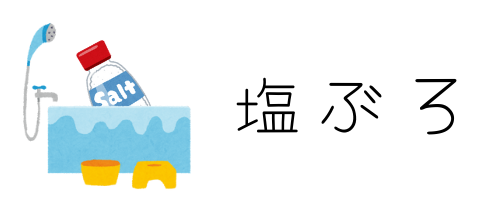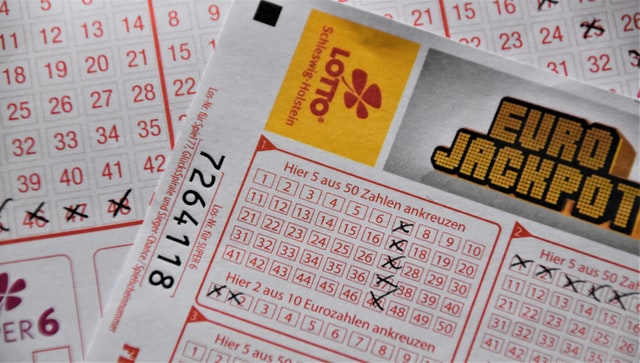ライフハックとしてではなく、英語学習にも極めて有用なのが、著名人が10分程度のプレゼンを行うTEDです。
TED Talksとは、あらゆる分野のエキスパートたちによるプレゼンテーションを無料で視聴できる動画配信サービスのことです。10年ほど前にサービスが開始されてから、政治、心理学、経済、日常生活などの幅広いコンテンツが視聴できることから人気を集めています。
RareJob English Lab
TEDは4000を超える膨大な数の動画があります。しかし慣れないうちは、動画の探し方や視聴のコツが分かりませんよね。この記事では、数多くのTEDを見てきた管理人(塩@saltandshio)が、心を揺さぶられたトークをあらすじと一緒にご紹介します。
ビジネス英会話を効率よく身につけたい方におすすめスクール
シェーン英会話
シェーンは1977年の創業以来、ネイティブ講師が英語を英語で教える「直接教授法」を採用しています。首都圏におけるスクール拠点数は、ネイティブ講師の英会話スクールでNo.1。駅から近いスクールが多いので通いやすく時間を有効に使えます。
スピークバディ パーソナルコーチング
1日1時間の短期集中トレーニングで、あなたの英語力向上をコーチが全力でサポートします。あなたの英語の世界が、劇的に変わります。
バラバーシ・アルベルト・ラースロー: 成功するチャンスと年齢に秘められた本当の関係
ネットワーク理論研究者のバラバーシ・アルベルト・ラースローが、数学的分析を裏付けに、(どんな分野かにかかわらず)成功の原因となる隠れたメカニズムを探ります。そして、成功するチャンスと年齢の間にある興味深い関連を明らかにしていきます(約16分)。
[PR]まずは無料カウンセリング”続けるため”の オンライン英語コーチ「スピークバディ パーソナルコーチング」成功するかしないかは、30歳までに決まる?
アルベルト・アインシュタインは、「科学において、30歳までに多大な貢献をしていない者は、その後もしない」と言っていました。つまり、アインシュタインは今回のトーカーであるバラバーシ・アルベルト・ラースローに対し、「科学者としては、もう終わっている」と宣言していることになります。
そんな軽いジョークから、バラバーシ・アルベルト・ラースローのトークは始まります。
ちなみに、バラバーシ・アルベルト・ラースローは終わっていませんでした。彼は28歳の時にネットワークというものに強い興味を持ち、数年後に世の中にインパクトを与える重要な論文をいくつか発表します。
その結果、ネットワーク科学と呼ばれる新しい分野が誕生しました。ほかにも、体内のネットワークにも興味を持ったバラバーシ・アルベルト・ラースローが、遺伝子とタンパク質と代謝物質の関わり合いや病気との繋がりについて研究結果を発表したところ、これが医学界に衝撃を与えます。現在ハーバード大学のネットワーク医学研究所(CDNM)では、この研究に基づき300名以上の研究者が、患者の治療と新たな治療法の開発に取り組んでいます。
そんなバラバーシ・アルベルト・ラースローはいま、自身のアイデアとネットワークの専門知識を活かして、「成功」を解明するべく研究を進めています。成功は自分が属するネットワークによって決まり、それが追い風にも向かい風にもなります。
つまり、これまで培った知識やビッグデータ、そして専門性を活かせば、成功が起こる過程を定量化するネットワークを作れないかと、バラバーシ・アルベルト・ラースローは考えたのです。
[PR]まずは無料カウンセリング”続けるため”の オンライン英語コーチ「スピークバディ パーソナルコーチング」実力は自分の力、成功はみんなの力
しかし、研究を進めたところ、ある事実が浮かび上がります。それは、成功はネットワークが全てではないということがわかったのです。なぜなら、成功に必要な要因はひとつではなく、多くの事象が絡まり合った結果、「成功」と呼ばれる現象を起こすからです。その重要な要因の一つに「実力」があります。
実力とはなんでしょうか?
実力は、『なにをするか』ということだとバラバーシ・アルベルト・ラースローは言います。どれだけ速く走ったか、どんな絵を描いたか、どんな論文を書いたか……などです。一方、成功とは(仮の定義で)『その人が実力で為したことを、コミュニティがどう受け止めるか。周りがそれをどう認め、どう報いるか』が『成功』です。
実力は本人に関することですが、成功はみんなに関することだということです。
この定義を発見した時、バラバーシ・アルベルト・ラースローらの研究チームはある意味発想の転換点を迎えました。この解釈により、より具体的に『成功』を測定することが出来るようになったからです。
[PR]しちだの魔法ペンなら35日でバイリンガルに!楽天4部門1位の英会話!<七田式>実力は有限である
実力者の一人として、バラバーシ・アルベルト・ラースローは陸上競技者であるウサイン・ボルトを例に出します。現役時代、向かうところ敵なしだったウサイン・ボルトですが、調べてみたところ、圧倒的な大差で勝利を収めたわけでは無いことがわかりました。最大でも2位より1%ほど速いだけだったのです。
研究チームから実力の測定が提出されるたびに、面白いことに気づきます。それは、実力は有限だということです。つまり、人間の実力に大した違いはなく、狭い範囲内で異なるだけだということがわかったのです。しかも、トップを見極めるには高精度の計測器が必要ですが、ほとんどの人は実力を正確に計測できない分野で働いてます。
実力というものに結論を出すと、実力は有限である。しかも、実力に関して私たちに大差はないということが言えるでしょう。
[PR]検定試験合格者累計140万人!スマホ対応☆国家資格ほか資格取得ならSMART合格対策講座成功は無限である
では、『成功』はどうでしょうか。
作家の成功を例に出すと、成功というものがわかりやすくなります。なぜなら、作家には本の発行部数(読者)という計測できる値があるからです。調査の結果、バラバーシ・アルベルト・ラースローは、『成功』に関しては際限がないという結論を下します。
例えば、週の売り上げが1位になった本があったとしましょう。一週間で売れた数は10万部です。しかし、翌週は別の本が1位になり、その本はなんと120万部売れました。1位と2位の差は歴然で、1番が2番をわずかに上回るというのでなく、桁違いの大差をつけて勝利を収めています。
『成功』が際限がないという理由はこのためです。
成功は集合的な尺度です。実力で得るというよりも、他者が与えるものなのです
まとめ:成功者とは、チャンスの切符を買い続けた人
科学者における成功とは
最初の話題に戻りましょう。「成功はいつ現れるのか」、アインシュタインがなぜ30歳という年齢を口に出したのか、調べてみるとその理由は2つありました。
- 周りの優秀な科学者は、おおむね20~30代になるまえに偉業を成し遂げたから
- アインシュタインが着目していたのは『天才』ばかりだったから
つまり、アインシュタインは自分の周りにいる『天才』だけに着目して、「人は30歳を超えたら創造的ではなくなる」という発言を残したのです。これではデータが偏ってしまいます。 科学者全員を観察して、「本当に年齢とともに創造性は消えるのか?」を問うべきなのです。そして、これこそがバラバーシ・アルベルト・ラースローのチームが行った試みでもありました。
バラバーシ・アルベルト・ラースローの研究チームは、科学者を一人残らず対象にしました。天才だけに偏らないようにするためです。そして、「アカデミック・エイジ」と呼ばれるものを指標にしました。その人が科学者として活動してから、どれほどの期間で成果を出したかを調べたのです。その結果、 最も影響力のある論文を出すのは、ほとんどの科学者が10~15年目だということがわかりました。それ以降は、わかりやすく下がっています。つまり、成果を出さなくなりました。
これは、科学者の創造性が約15年で枯渇したということでしょうか?
チームは、この疑問に対する答えを求めるため、科学者たちが成果を出す年月と一緒に、生産性についても調べてみました。つまり、彼らが論文を書いた時期についても調べたのです。生産性を測ってみたところ、驚くことに生産性……つまり論文を書く可能性の高い時期と、経歴上で影響力を持つ可能性の高い時期とが、区別できないほどそっくりだということがわかりました。
簡単に言うと、科学者の仕事においては結果を出す時期と論文を出す時期が非常に近いので、その時期に行っているプロジェクトはどれも自己ベストになる可能性があるということです。発見は宝くじのようなものです。買えば買うほどチャンスが増えます。つまり、結果を出したほとんどの科学者が、最も 宝くじを買った時期が経歴上10~15年目だったのです。
しかし、そのあとの結果は思わしくありません。それも当然です。なぜなら結果を出した科学者たちは、それ以降頑張らなくなったからです。新しい宝くじを買わなくなれば、次の結果も生まれません。成果を出さなくなったのは年齢のせいでも、創造性が失われたわけでもありません。生産性を失っただけなのです。
結果が出ないのは年齢のせいではないという一例として、バラバーシ・アルベルト・ラースローはジョン・フェンという科学者を紹介しています。ジョン・フェンは70歳でイェール大学を退職させられ、研究室を閉鎖されました。しかし、ジョン・フェンはバージニア・コモンウェルス大学に移り、新たに研究室を開いて72歳で論文を発表します。なんとその論文が15年後にノーベル化学賞を受賞します。
成功するのに実際に年齢は関係ありません。どれだけ、宝くじの切符を買い続けたかというほうが重要なのです。

起業家における成功とは
科学者だけではなく、起業家も例としてみてみましょう。シリコンバレーでは、20代、30代の若者たちが大きな賞を獲得しています。「若さは成功に等しい」という風潮が、シリコンバレーにはあります。しかし、データを見ると事情は変わってきます。
ここで着目するべきは、会社の設立が成功ではないということです。
彼らが立ち上げた会社が、そのあとに発展したか倒産したかについても見る必要があります。すると、ここでも意外な一面がわかってきます。シリコンバレーでは、20代、30代の若者がとても多くの会社を設立していますが、じつはそのほとんどが倒産しているのです。逆に、年齢が上がるほど株式上場にこぎつけています。50代になると、保有する株式を売却し、投資した資金を回収している確率が、30代と比べて2倍にもなっています。
結論を述べると、創造性に年は関係なく、関係あるのは生産性である、ということです。
挑戦し続ける限り、何度だって成功することはできる!
あなたはなにかに挑戦していますか?
小さくても行動を起こしていけば、いずれ大きな結果がついてきます。その一歩目を、いまから踏み出してみませんか?
英語全文
Today, actually, is a very special day for me, because it is my birthday. And so, thanks to all of you for joining the party. But every time you throw a party, there’s someone there to spoil it. Right?
<全文を読む>▼クリック▼
Now, you don’t need to check Wikipedia that I’m beyond 30.
So, effectively, what he is telling me, and us, is that when it comes to my science, I’m deadwood. Well, luckily, I had my share of luck within my career. Around age 28, I became very interested in networks, and a few years later, we managed to publish a few key papers that reported the discovery of scale-free networks and really gave birth to a new discipline that we call network science today. And if you really care about it, you can get a PhD now in network science in Budapest, in Boston, and you can study it all over the world.
A few years later, when I moved to Harvard first as a sabbatical, I became interested in another type of network: that time, the networks within ourselves, how the genes and the proteins and the metabolites link to each other and how they connect to disease. And that interest led to a major explosion within medicine, including the Network Medicine Division at Harvard, that has more than 300 researchers who are using this perspective to treat patients and develop new cures.
And a few years ago, I thought that I would take this idea of networks and the expertise we had in networks in a different area, that is, to understand success. And why did we do that? Well, we thought that, to some degree, our success is determined by the networks we’re part of — that our networks can push us forward, they can pull us back. And I was curious if we could use the knowledge and big data and expertise where we develop the networks to really quantify how these things happen.
This is a result from that. What you see here is a network of galleries in museums that connect to each other. And through this map that we mapped out last year, we are able to predict very accurately the success of an artist if you give me the first five exhibits that he or she had in their career.
Well, as we thought about success, we realized that success is not only about networks; there are so many other dimensions to that. And one of the things we need for success, obviously, is performance. So let’s define what’s the difference between performance and success. Well, performance is what you do: how fast you run, what kind of paintings you paint, what kind of papers you publish. However, in our working definition, success is about what the community notices from what you did, from your performance: How does it acknowledge it, and how does it reward you for it? In other terms, your performance is about you, but your success is about all of us. And this was a very important shift for us, because the moment we defined success as being a collective measure that the community provides to us, it became measurable, because if it’s in the community, there are multiple data points about that. So we go to school, we exercise, we practice, because we believe that performance leads to success. But the way we actually started to explore, we realized that performance and success are very, very different animals when it comes to the mathematics of the problem. And let me illustrate that.
So what you see here is the fastest man on earth, Usain Bolt. And of course, he wins most of the competitions that he enters. And we know he’s the fastest on earth because we have a chronometer to measure his speed. Well, what is interesting about him is that when he wins, he doesn’t do so by really significantly outrunning his competition. He’s running at most a percent faster than the one who loses the race. And not only does he run only one percent faster than the second one, but he doesn’t run 10 times faster than I do — and I’m not a good runner, trust me on that.
And every time we are able to measure performance, we notice something very interesting; that is, performance is bounded. What it means is that there are no huge variations in human performance. It varies only in a narrow range, and we do need the chronometer to measure the differences. This is not to say that we can not see the good from the best ones, but the best ones are very hard to distinguish. And the problem with that is that most of us work in areas where we do not have a chronometer to gauge our performance.
Alright, performance is bounded, there are no huge differences between us when it comes to our performance. How about success? Well, let’s switch to a different topic, like books. One measure of success for writers is how many people read your work. And so when my previous book came out in 2009, I was in Europe talking with my editor, and I was interested: Who is the competition? And I had some fabulous ones. That week —
Dan Brown came out with “The Lost Symbol,” and “The Last Song” also came out, Nicholas Sparks. And when you just look at the list, you realize, you know, performance-wise, there’s hardly any difference between these books or mine. Right? So maybe if Nicholas Sparks’s team works a little harder, he could easily be number one, because it’s almost by accident who ended up at the top. So I said, let’s look at the numbers — I’m a data person, right? So let’s see what were the sales for Nicholas Sparks. And it turns out that that opening weekend, Nicholas Sparks sold more than a hundred thousand copies, which is an amazing number. You can actually get to the top of the “New York Times” best-seller list by selling 10,000 copies a week, so he tenfold overcame what he needed to be number one. Yet he wasn’t number one. Why? Because there was Dan Brown, who sold 1.2 million copies that weekend.
And the reason I like this number is because it shows that, really, when it comes to success, it’s unbounded, that the best doesn’t only get slightly more than the second best but gets orders of magnitude more, because success is a collective measure. We give it to them, rather than we earn it through our performance.
So one of things we realized is that performance, what we do, is bounded, but success, which is collective, is unbounded, which makes you wonder: How do you get these huge differences in success when you have such tiny differences in performance? And recently, I published a book that I devoted to that very question. And they didn’t give me enough time to go over all of that, so I’m going to go back to the question of, alright, you have success; when should that appear?
So let’s go back to the party spoiler and ask ourselves: Why did Einstein make this ridiculous statement, that only before 30 you could actually be creative? Well, because he looked around himself and he saw all these fabulous physicists that created quantum mechanics and modern physics, and they were all in their 20s and early 30s when they did so. And it’s not only him. It’s not only observational bias, because there’s actually a whole field of genius research that has documented the fact that, if we look at the people we admire from the past and then look at what age they made their biggest contribution, whether that’s music, whether that’s science, whether that’s engineering, most of them tend to do so in their 20s,30s, early 40s at most. But there’s a problem with this genius research. Well, first of all, it created the impression to us that creativity equals youth, which is painful, right?
And it also has an observational bias, because it only looks at geniuses and doesn’t look at ordinary scientists and doesn’t look at all of us and ask, is it really true that creativity vanishes as we age? So that’s exactly what we tried to do, and this is important for that to actually have references.
So let’s look at an ordinary scientist like myself, and let’s look at my career. So what you see here is all the papers that I’ve published from my very first paper, in 1989; I was still in Romania when I did so, till kind of this year. And vertically, you see the impact of the paper, that is, how many citations, how many other papers have been written that cited that work. And when you look at that, you see that my career has roughly three different stages. I had the first 10 years where I had to work a lot and I don’t achieve much. No one seems to care about what I do, right? There’s hardly any impact.
That time, I was doing material science, and then I kind of discovered for myself networks and then started publishing in networks. And that led from one high-impact paper to the other one. And it really felt good. That was that stage of my career.
So the question is, what happens right now? And we don’t know, because there hasn’t been enough time passed yet to actually figure out how much impact those papers will get; it takes time to acquire. Well, when you look at the data, it seems to be that Einstein, the genius research, is right, and I’m at that stage of my career.
So we said, OK, let’s figure out how does this really happen, first in science. And in order not to have the selection bias, to look only at geniuses, we ended up reconstructing the career of every single scientist from 1900 till today and finding for all scientists what was their personal best, whether they got the Nobel Prize or they never did, or no one knows what they did, even their personal best. And that’s what you see in this slide. Each line is a career, and when you have a light blue dot on the top of that career, it says that was their personal best. And the question is, when did they actually make their biggest discovery? To quantify that, we look at what’s the probability that you make your biggest discovery, let’s say,one,two,three or 10 years into your career? We’re not looking at real age. We’re looking at what we call “academic age.” Your academic age starts when you publish your first papers. I know some of you are still babies.
So let’s look at the probability that you publish your highest-impact paper. And what you see is, indeed, the genius research is right. Most scientists tend to publish their highest-impact paper in the first 10,15 years in their career, and it tanks after that. It tanks so fast that I’m about — I’m exactly 30 years into my career, and the chance that I will publish a paper that would have a higher impact than anything that I did before is less than one percent. I am in that stage of my career, according to this data. But there’s a problem with that. We’re not doing controls properly. So the control would be, what would a scientist look like who makes random contribution to science? Or what is the productivity of the scientist? When do they write papers? So we measured the productivity, and amazingly, the productivity, your likelihood of writing a paper in year one,10 or 20 in your career, is indistinguishable from the likelihood of having the impact in that part of your career.
And to make a long story short, after lots of statistical tests, there’s only one explanation for that, that really, the way we scientists work is that every single paper we write, every project we do, has exactly the same chance of being our personal best. That is, discovery is like a lottery ticket. And the more lottery tickets we buy, the higher our chances. And it happens to be so that most scientists buy most of their lottery tickets in the first 10,15 years of their career, and after that, their productivity decreases. They’re not buying any more lottery tickets. So it looks as if they would not be creative. In reality, they stopped trying. So when we actually put the data together, the conclusion is very simple: success can come at any time. It could be your very first or very last paper of your career. It’s totally random in the space of the projects. It is the productivity that changes.
Let me illustrate that. Here is Frank Wilczek, who got the Nobel Prize in Physics for the very first paper he ever wrote in his career as a graduate student.
More interesting is John Fenn, who, at age 70, was forcefully retired by Yale University. They shut his lab down, and at that moment, he moved to Virginia Commonwealth University, opened another lab, and it is there, at age 72, that he published a paper for which,15 years later, he got the Nobel Prize for Chemistry.
And you think, OK, well, science is special, but what about other areas where we need to be creative? So let me take another typical example: entrepreneurship. Silicon Valley, the land of the youth, right? And indeed, when you look at it, you realize that the biggest awards, the TechCrunch Awards and other awards, are all going to people whose average age is late 20s, very early 30s. You look at who the VCs give the money to, some of the biggest VC firms — all people in their early 30s. Which, of course, we know; there is this ethos in Silicon Valley that youth equals success. Not when you look at the data, because it’s not only about forming a company — forming a company is like productivity, trying, trying, trying — when you look at which of these individuals actually put out a successful company, a successful exit. And recently, some of our colleagues looked at exactly that question. And it turns out that yes, those in the 20s and 30s put out a huge number of companies, form lots of companies, but most of them go bust. And when you look at the successful exits, what you see in this particular plot, the older you are, the more likely that you will actually hit the stock market or the sell the company successfully. This is so strong, actually, that if you are in the 50s, you are twice as likely to actually have a successful exit than if you are in your 30s.
So in the end, what is it that we see, actually? What we see is that creativity has no age. Productivity does, right? Which is telling me that at the end of the day, if you keep trying —
you could still succeed and succeed over and over. So my conclusion is very simple: I am off the stage, back in my lab.
Thank you.
<閉じる>
\ ほかにも気になるトークが満載! /








